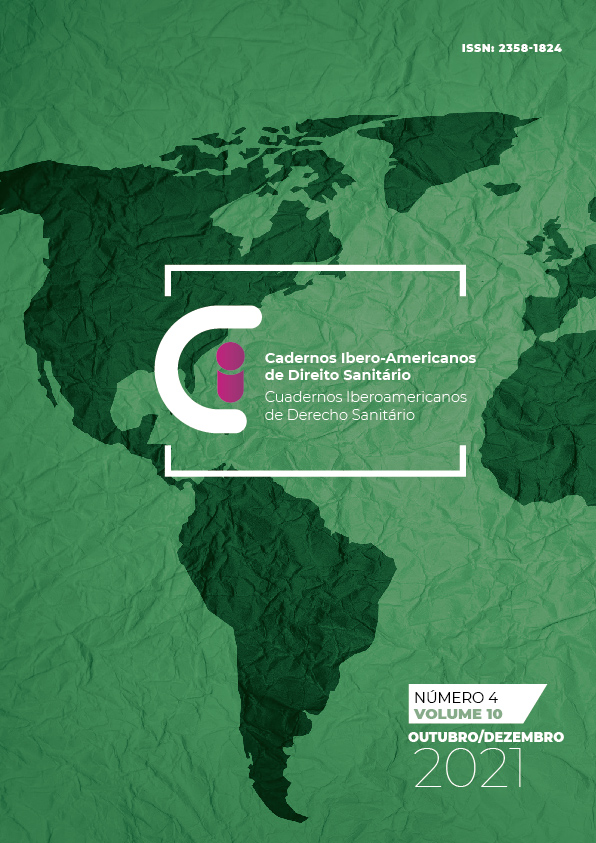Resumen
La Convención sobre los Derechos del Niño y el Protocolo facultativo de la Convención sobre los Derechos del Niño Relativo a un Procedimiento de Comunicaciones (PFPC) establecen compromisos y garantías en relación con la salud infantil. El objetivo del estudio es verificar los efectos de estos compromisos sobre las causas de muerte infantil. Para analizar estos efectos, aplicamos el análisis de varianza unidireccional. Para cada grupo, calculamos los promedios de muertes infantiles en sus respectivos países para los años 2002, 2007, 2012 y 2017. El valor p resultante indicó si había una diferencia entre los promedios de muertes infantiles en los años comparados. También observamos la serie de tiempo para cada causa de muerte durante los años 2000 a 2017. El CRC tiene una adherencia significativa. OPCP tiene menos aceptadores en todas las regiones en comparación con CRC. La aceptación del OPCP no cambió significativamente los resultados del número de muertes en los países receptores en ninguna de las 13 causas observadas de muerte infantil. En el grupo de no aceptación, se encontraron diferencias significativas en relación con cinco causas de muerte infantil: VIH/SIDA, enfermedades diarreicas, sarampión, meningitis/encefalitis e infecciones respiratorias bajas agudas (valores de p 0.01, 0.01, 0.003, 0.002 y 0,003, respectivamente). Nuestros resultados sugieren que el grupo de países que ha aceptado el OPCP está más comprometido con los temas de causas de muerte infantil estudiados. En todos ellos, las cifras de mortalidad anual fueron considerablemente menores en este grupo.
Referencias
Tobin J. The UN Convention on the Rights of the Child: a commentary. 1º edition. Oxford: Oxford University Press; 2019. 1823 p.
Jancic OC. The Rights of the Child in a Changing World: 25 years after the UN Convention on the Rights of the Child. Switzerland: Springer International Publishing; 2016. 410 p.
UN. Resolution 44, on September 25, 1990. Establishes the Convention on the Rights of the Child. United Nations General Assembly, September 25, 1990 [cited on August 12, 2021]. Available in: https://www.ohchr.org/Documents/ProfessionalInterest/crc.pdf
Crivelli DE. The Italian debate about the ratification of Protocol. Riv Eurojus. 2020;11(4):1-11.
UN. Resolution 66/138, January 27, 2012. Establishes the Optional Protocol to the Convention on the Rights of the Child on a communications procedure. United Nations General Assembly, January 27, 2012 [cited on August 12, 2021]. Available in: https://resourcecentre.savethechildren.net/node/15175/pdf/n1146710.pdf
Wright C, Blake N, Glennie L, Smith V, Bender R, Kyu H, et al. The Global Burden of Meningitis in Children: Challenges with Interpreting Global Health Estimates. Microorganisms. 2021; 377(9):1-16.
Palmer A, Tomkinson J, Phung C, Ford N, Joffres M, Fernandes KA, et al. Does ratification of human-rights treaties have effects on population health? The Lancet. 2009; 373(9679):1987–92.
OHCHR: Convention on the Rights of the Child [Internet]. Status of Ratification. 2021 [cited on June 15, 2021]. Available in: https://indicators.ohchr.org/
WHO: World Health Organization Countries Classification. [Internet]. Countries. 2021 [cited on June 15, 2021]. Available in: https://www.who.int/countries
WHO: The Global Health Observatory data repository: deaths in children aged <5years, by cause. [Internet]. Number of deaths by country. 2021 [cited on June 15, 2021]. Available in: https://apps.who.int/gho/data/node.main.ChildMortCTRY1002015?lang=en
Bewick V, Cheek L, Ball J. Statistics review: One-way analysis of variance. Crit Care. 2004; 8(2):130-136.
Demleitner NV. The State, Parents, Schools, “Culture Wars,” and Modern Technologies: Challenges under the U.N. Convention on the Rights of the Child. Am J Comp LAW. 2014; 62:24.
Hrabar D. Bridging the non-protection of children’s rights through the Optional Protocol to the CRC on communications procedure and a future european court. Godisnjak Akademije pravnih znanosti Hrvatske. 2017; 22(3):13-33.
Wilson A, Daar AS. A Survey of International Legal Instruments to Examine Their Effectiveness in Improving Global Health and in Realizing Health Rights. J Law Med Ethics. 2013;41(1):89–102.
Frank TD, Carter A, Jahagirdar D, Biehl MH, Douwes-Schultz D, Larson SL, et al. Global, regional, and national incidence, prevalence, and mortality of HIV, 1980–2017, and forecasts to 2030, for 195 countries and territories: a systematic analysis for the Global Burden of Diseases, Injuries, and Risk Factors Study 2017. Lancet HIV. 2019;6(12):e831–59.
Troeger C, Forouzanfar M, Rao PC, Khalil I, Brown A, Reiner RC, et al. Estimates of global, regional, and national morbidity, mortality, and aetiologies of diarrhoeal diseases: a systematic analysis for the Global Burden of Disease Study 2015. Lancet Infect Dis. 2017;17(9):909–48.
Griffin DE. Measles virus and the nervous system. In: Tselis AC, Booss J, editors. Handbook of Clinical Neurology. 3rd series. Elsevier; 2014. p. 577-590.
Troeger C, Blacker B, Khalil IA, Rao PC, Cao J, Zimsen SRM, et al. Estimates of the global, regional, and national morbidity, mortality, and aetiologies of lower respiratory infections in 195 countries, 1990–2016: a systematic analysis for the Global Burden of Disease Study 2016. Lancet Infect Dis. 2018;18(11):1191–210.

Esta obra está bajo una licencia internacional Creative Commons Atribución-NoComercial-CompartirIgual 4.0.
Derechos de autor 2021 Cadernos Ibero-Americanos de Direito Sanitário

